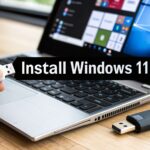Australia
In our connected lives, software is the foundation of everything we do, from managing business finances to connecting with family. Yet, the temptation of a “free” download can expose us to significant threats. Understanding the role of genuine software is not just about features or performance, it is about building a secure digital environment from the ground up.
The Hidden Dangers of Unofficial Software
The promise of free software often comes with a hidden, non-negotiable price. Unofficial or “cracked” versions are a primary channel for delivering malicious code directly onto your computer. These programs are frequently bundled with spyware that logs your keystrokes, ransomware that holds your files hostage, or malware that silently siphons off personal information. The initial saving is quickly overshadowed by the immense cybersecurity risks of pirated software.
A critical flaw in these versions is their complete isolation from official support. They cannot receive security updates from the developer, which means any vulnerability discovered after the software was pirated remains unpatched forever. This leaves your system in a state of permanent exposure, like a house with a broken lock that can never be fixed. This is why robust protection, such as the security offered by our Norton 360 Premium solution, becomes essential in identifying and neutralizing these threats.
The consequences are tangible and disruptive. Users often experience frequent system crashes, unexplained slowdowns, and data corruption that can render important files unusable. Beyond the technical headaches, the real damage occurs when stolen financial details or passwords are used for fraud, turning a simple download into a significant personal crisis.
The Protective Shield of Consistent Security Updates
While unofficial software leaves you exposed, genuine versions build a proactive defence through consistent updates. Think of a security “patch” as a targeted repair for a newly discovered loophole in the software’s code. Legitimate vendors like Microsoft operate a continuous cycle of identifying these weaknesses and deploying fixes to protect their users. This automated process is one of the most direct ways how software updates improve security, often working in the background without you needing to do a thing.
This speed is essential because cybercriminals are always searching for new entry points, including “zero-day exploits” which are attacks targeting vulnerabilities the moment they become known. Genuine software dramatically shortens the window of opportunity for these attacks. With an authentic operating system like our Windows 11 Pro, your device receives a steady stream of security patches that fortify its defences against emerging threats.
This is not just a theoretical benefit. Research from Verizon’s Data Breach Investigations Report highlights that organisations with automated patch management systems see a significant decrease in successful cyberattacks. This data confirms that the ongoing service included with genuine software is a powerful shield, actively working to keep your digital life secure and private.
Closing the Door on System Vulnerabilities
To fully appreciate the protection offered by genuine software, it helps to understand what a vulnerability is. Imagine it as an unlocked door in your system’s code, an inherent flaw that attackers can exploit. Cybercriminals use automated tools to constantly scan the internet for devices with these known, unpatched flaws. When they find one, they can walk right in.
Purchasing genuine software is like investing in a dedicated security team. Major vendors invest heavily in proactively finding and fixing these flaws before they can be widely exploited. This is the most effective way to protect your PC from malware, as the vast majority of attacks target old, known issues that have long been patched in legitimate software. By using authentic operating systems, you ensure that these doors are locked as soon as a threat is identified.
The contrast between how genuine and non-genuine software handle these risks is stark. One provides a structured, rapid response, while the other leaves you permanently defenceless against known threats.
| Stage | Genuine Software Response | Non-Genuine Software Risk |
|---|---|---|
| Vulnerability Discovered | Vendor security teams are alerted and begin work on a patch. | The vulnerability remains unknown and unaddressed. |
| Patch Developed & Tested | A security patch is created, tested, and prepared for distribution. | No patch is developed, leaving the ‘door’ open. |
| Patch Deployed | The update is automatically pushed to all users, closing the vulnerability. | The system remains permanently exposed to attack. |
| Exploitation Attempt | Attack is blocked as the vulnerability no longer exists. | The system is successfully compromised, leading to data theft or damage. |
Meeting Cybersecurity and Compliance Standards
For professionals and businesses, the conversation extends beyond personal security to include legal and contractual obligations. Genuine software is developed to meet internationally recognised cybersecurity frameworks, such as ISO/IEC 27001. This certification is not just a label, it signifies that the software has undergone rigorous testing and adheres to strict data protection protocols. It is a clear indicator of reliability and trustworthiness.
In many industries, using verified software is a non-negotiable requirement. Regulations like GDPR in Europe mandate that organisations take appropriate measures to protect personal data, and using pirated software is a clear violation of this duty. The consequences of non-compliance are severe, ranging from heavy fines to the loss of client contracts and irreversible reputational damage. A data breach traced back to unlicensed software can destroy the trust you have built with your customers.
This underscores the importance of authentic software licenses as a core business asset. Equipping your team with legitimate tools like our Microsoft Office 2021 suite is not just about productivity, it is about demonstrating a commitment to security and professionalism that clients and partners expect.
A Practical Checklist for Software Authenticity
Ensuring you are using genuine software is straightforward when you know what to look for. A legitimate license is more than just a product, it is an ongoing service that provides security, stability, and peace of mind. Following these simple steps can help you confirm the authenticity of your purchase and enjoy all the benefits of genuine software.
- Purchase from trusted retailers. The most critical step is to buy from a source that explicitly guarantees authenticity. At DigitalHubKey, we stand by the legitimacy of every product we sell, and you can learn more about our commitment to our customers.
- Verify the transaction process. During checkout, look for secure payment indicators like SSL certificates in your browser. After purchase, you should receive an official confirmation email containing a valid product key and secure download links.
- Confirm activation after installation. Once the software is installed, check its activation status. For Windows, you can do this by navigating to Settings, selecting Update & Security, and then clicking on Activation to see that your license is genuine and active.







